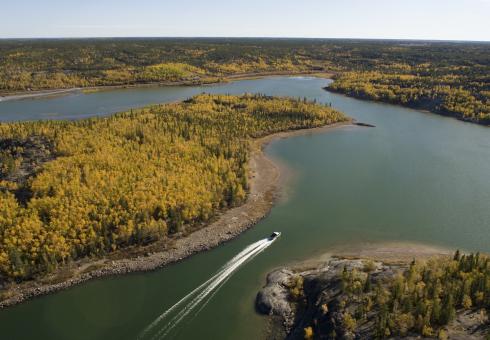How will you report on and share your data and monitoring results?
You will likely need to determine what data can be shared, with whom and under what circumstances or conditions. Consider what you want your data to influence and how it can be reported out on and shared to have the biggest impact.
See the story 'Many Lines on a Map: Kitasoo/Xai’xais First Nation' to see how powerful GPS tracks of patrols can be.
Develop data sharing protocols if you plan to share your data. Data sharing protocols help clarify who gets access to the data, what kinds of data, for what time period, and for what purpose. Ecotrust Canada has shared their "Data Sharing Questions to get you started and the Central Coast Indigenous Resource Alliance (CCIRA) has shared an "Information Sharing Agreement Template" to assist you in drafting an agreement for sharing information with Crown agencies.
Determine who in your organization or community can make decisions about data sharing. There are certain types of data that may need to be kept confidential, such as cultural site locations, harvest sites, or information about suspicious activities or compliance issues. Develop clear guidelines and make sure anyone with access to the information understands and follows them.
Similarly, as you conduct analysis and write up results, you may want to share monitoring findings with the community or with external stakeholders in academia, government or industry. Consider both the benefits and potential risks of sharing this information (in whole or in part). Take measures to retain control of the information to ensure it is not misrepresented or misused. Whenever possible, use the power that data visualization, maps, and other graphic tools can offer to breathe real life into your monitoring data, and its ability to influence and inform your key audiences.
Can you increase the impact of your data by adding it to larger data sets that will paint a bigger picture about changes or issues you are working on? Increasingly, Indigenous communities and others are seeing the power in collaborating by sharing non-confidential data to contribute to larger data sets. A great example in Canada is the Mackenzie DataStream that is an open access platform that houses water data from Indigenous communities and others throughout the Mackenzie River Basin in order to advance collaborative, evidence-based decision-making to support healthy waters for generations to come. See the Story “Mackenzie DataStream: Data sharing for shared water stewardship”.


